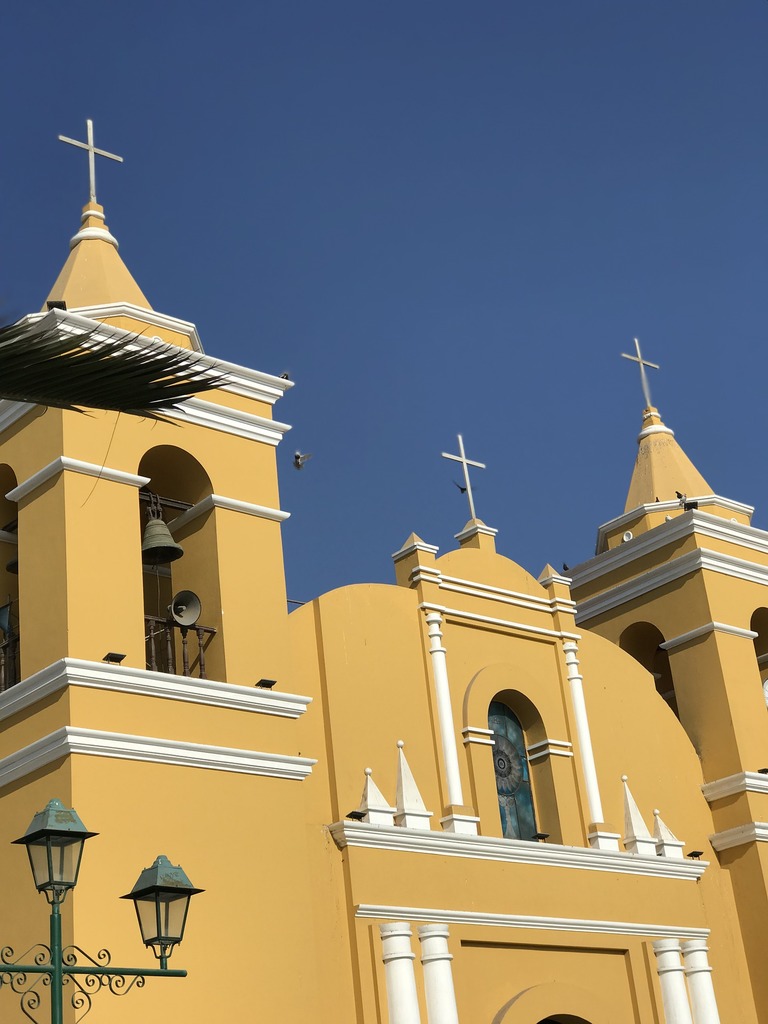Is Peru Safe? | Gringo’s Travel Guide
Is Peru safe?
I wish I had a scary story about my time in Peru. I wish I could recall a time when I was genuinely concerned, but that’s not the reality of the situation. Here’s the reality:
Peru is safe to visit. Te lo juro.
Peru is certainly not like Colombia or Brazil. In some ways, this is a great thing. I’m inclined to say safety is one of them.
Now, hopefully, I don’t jinx myself here. Fingers are crossed I’m not robbed at gunpoint the next time I whip out my smartphone in public here in Lima. I’m willing to bet that won’t happen.
Throughout two trips to Peru, I’ve yet to hear about any crimes against traveling foreigners outside of a few people getting jacked at the hostel and a couple morons getting robbed buying weed.
I’m sure there have been far graver offenses, and I’m confident there’ll be more. Peru, however, is firmly placed on the “Gringo Trail” throughout South America. Many a gringo starts their adventures in Peru. Travelers often start in Peru to check out Machu Picchu before heading off to more “dangerous” destinations — like Ecuador or Colombia.
As nice chunk of Peru’s economy revolves around tourism, the country makes an effort to keep these rookie travelers safe and sound.
Hell, there was even a “nursing home convention” in Miraflores the other day. Nearly a hundred retired gringos were walking around the neighborhood with a perfect English-speaking guide, before heading to Machu Picchu the next day.
TL:DR – If your grandparents can stay safe in Peru, so can you!
Now, there’s a little bit more to it than that — especially with the Venezuela crisis and all. So in this in-depth guide, I’ll breakdown everything you need to know about stay safe in Peru.
We’ll go over how to stay safe, what areas to avoid, and how to ensure you drink doesn’t get drugged while enjoying some of the famous Lima nightlife.
You’ll find everything below, including:
[toc]Pues…
¡Vámonos!
Is Peru Safe? | My Honest Opinion
In my opinion, Peru is not dangerous for the average traveler. While I’ve had a few issues in other countries, like getting jumped at the park while trying to do some pull-ups, I haven’t had a single problem in Peru.
Most travelers haven’t either. And I’ve been to a fair share of places in the country, including:
- Lima
- Cusco
- Machu Pichu
- Huanchaco
- Trujillo
- Mancora
- Piura
While I certainly haven’t seen the whole country, I’ve gotten out of Miraflores a little bit and seen some of Peru. It’s not as dangerous as some would have you believe.
However, don’t be fooled.
There’s some really sh*tty areas of any big city, and Lima certainly is no different. I’ve only seen the slums around the historic center of Lima, but there’s no way in hell you’d catch me around that area during the evening.
Or Callao. This gringo doesn’t mess with Callao. You shouldn’t, either ;(

Safety Concerns in Peru
As I finish up my second trip to Peru, I’ve noticed a few things to pay attention to in the country.
If someone was to ask me, “Is Peru safe?” – these would be the items I’d tell them to look for:
- Petty Theft: Crimes like getting your phone stolen out of your pocket or a hobo shoving a knife in your face to get your wallet can happen anywhere. Peru is no exception. Minor petty theft like the above isn’t common in Peru, but it can happen, especially if you venture into poverty stricken neighborhoods after dark.
- Bad Drugs: Many travelers come to Peru to test out ayahuasca. The “drug” is said to offer hallucinations and insight into the subconscious. I haven’t tried it, but I’ve heard many foreigners come to Peru each year to test the “drug” out only to never make it home. People can die if this substance is not prepared properly.
- Pay Attention On Bus: Certain individuals have had their backpacks opened up and valuable stollen on buses in Peru. If you’re going to travel by bus throughout the country, find a safe way to hide your valuables like computers and cameras, as thieves target foreigners on these buses.
- Getting Drugged: There have been stories of Peruvian women drugging foreign men in bars, and then robbing them later that evening. This happened to my buddy and he barely got out alive. Bad dosing by the girl. It’s not as likely as in Colombia, but you’ve gotta pay attention to your drink when out at night.
Things You Don’t Have to Worry About in Peru…
Peru certainly isn’t perfect and there are some safety concerns here. However, the country is far safer than many other South American countries.
Far, far safer!
As such, there’s one type of crime foreign travelers won’t have to worry about while traveling in Peru. What’s that? Well…
- Most Violent Crime: Violent crime just isn’t that common in Peru. I haven’t heard about many, if any, armed robberies. People don’t warn you about the dangers of the country during every conversation. This isn’t Colombia or Brazil, and it certainly isn’t Venezuela. Cities like Lima, Cusco, and the like simply don’t allow criminals to run amuck in the nice areas.
What the Stats Say? | Peru Safety Edition
Now, I wouldn’t ask you to just take my word for it. Let’s look at some statistics and see is Peru is safe.
First, let’s check out the list of the 50 most dangerous cities in the world. Does Peru have any cities on the list. Nope! Not a one. But…
- How many does Colombia have? Two.
- The United States? Four cities on the list.
- Brazil? A whooping 14 cities!
- Mexico has 15 cities on the list!
*Source: USA Today
But, let’s take a little deeper look at things. Maybe Peru isn’t that dangerous, but it’s a South American country – the murder rate must be kind of high.
It’s not! In fact, Peru has murder rate of 7.7 people per 100,000 (Source). That’s just a bit higher than the murder rate of the United States, which sits at 5.3 people per 100,000. Hell, that’s even similar to European countries like Lithuania and Latvia.
Is Peru dangerous? Doesn’t seem so.
Now, there’s obvious petty theft issues in the country. They’ll be some issues with economically driven crime, where someone wants to steal a new iPhone or GoPro because they could never afford one.
But even that is fairly uncommon in the tourist hotspots.

What Does the U.S. State Department Say?
In the past, there wasn’t a single travel advisory against Peru. However, that changed recently due to a few factors. Recently, the USA issues a Level 2 Travel Advisory against Peru.
The advisory is mainly aimed toward a few regions known as drug trafficking hotspots:
Exercise increased caution in Peru due to crime and terrorism. Some areas have increased risk.
Do not travel to:
- The Colombian – Peruvian border area in the Loreto Region due to crime.
- The Valley of the Apurímac, Ene, and Mantaro Rivers (VRAEM), including areas within the Departments of Ayacucho, Cusco, Huancavelica, and Junin, due to crime and terrorism.
Crime, including petty theft, carjackings, muggings, assaults, and violent crime, is a concern in Peru, and can occur during daylight hours, despite the presence of many witnesses. The risk of crime increases after hours and outside the capital city of Lima where more organized criminal groups have been known to use roadblocks to rob victims (Source).
While that may be a bit alarming, the US Government is known for sounding the alarm bells when things are perfectly fine in a foreign country, especially around Latin America.
Peru is still safe, especially if you plan to stay on the “Gringo Trail” most of your trip.
Plus, the Peru advisory definitely reads a little differently than an actually dangerous country like Venezuela. I mean there’s nothing about “murder being commonplace” above, like you’ll find in the Venezuela travel advisory below:
Venezuela – Level 4: Do Not Travel
Do not travel to Venezuela due to crime, civil unrest, poor health infrastructure, kidnapping, and arbitrary arrest and detention of U.S. citizens.Country Summary: On January 24, 2019, the Department ordered the departure of non-emergency U.S. government employees and family members due to ongoing political instability. The U.S. government has limited ability to provide emergency services to U.S. citizens in Venezuela.
Violent crime, such as homicide, armed robbery, kidnapping, and carjacking, is common. Political rallies and demonstrations occur, often with little notice. Demonstrations typically elicit a strong police and security force response that includes the use of tear gas, pepper spray, water cannons, and rubber bullets against participants and occasionally devolve into looting and vandalism.
There are shortages of food, electricity, water, medicine, and medical supplies throughout much of Venezuela. The U.S. Centers for Disease Control and Prevention (CDC) issued a Level 3 ‘Avoid Nonessential Travel’ notice on May 15, 2018 due to inadequate healthcare and the breakdown of the medical infrastructure in Venezuela.
Consular access to detained U.S. citizens who also have Venezuelan nationality is severely restricted by the Venezuelan government and the U.S. Embassy may not receive access in these cases. Security forces have arbitrarily detained U.S. citizens for long periods. Venezuelan authorities may not notify the U.S. Embassy of the detention of a U.S. citizen, and consular access to detainees may be denied or severely delayed (Source).”
There’s a big difference between safety in Venezuela and in Peru.
Overall, crime is present in Peru. However, you’ll have a lot less to worry about in Peru than in most South American countries. Peruvians are generally friendly people and violent crime isn’t as common here as other places.

How to Stay Safe in Peru
Honestly, you don’t need to take many precautions while traveling in Peru. There are dangerous parts, but many gringos travel around without an ounce of Spanish speaking ability and have zero issues.
Overall, you can stay safe in Peru by taking a few minor precautions, like:
-
Stay in a Safe Neighborhood
Overall, the easiest way to ensure you’re safe in Peru is by staying in a great neighborhood. If you stay around Miraflores or Barranco in Lima, I’m fairly confident you won’t have any issues.
Miraflores may be the safest neighborhood in Latin America. I’d be baffled if you encountered any violent crime in the area.
Outside Lima, I’d surmise petty theft is more common, but still rare. Just stay in the best area you can find and you won’t have much issue. Stay near Plaza de Armas in Cusco or near the beach in Huanchaco or Mancora.
Your best bet? Get yourself a private apartment on Airbnb with solid reviews. I always stay in Airbnb spots and have yet to have an issue. Knock on wood!
Get $40 off your first Airbnb rental by clicking here!
-
Learn a Little Spanish
While many a traveler comes to Peru without a lick of Spanish, you’ll minimize any risks and enhance your trip by learning some of the language.
Being able to communicate with locals of all walks of life is a great way to learn about the culture. And the only way you can do that in Peru is by speaking Spanish. You don’t need much. Just enough to have a quick conversation.
The best way to learn Spanish? Click here to find out!
-
Pay Attention to Valuables
Finally, just pay attention to your valuables in Peru. Make sure your electronics are secure on the bus and in the hostel. Don’t give someone the opportunity to jack your MacBook or iPhone.
Honestly, I’ve heard of more people getting jacked on the bus or by fellow travelers at the hostel than anything else. So pay attention in these situations and you’ll be set.

Machu Picchu is a MUST!
Is Peru Safe? | Verdict
Overall, I don’t believe Peru is a dangerous country.
While I never had any issues in Colombia, there’s no denying the crime levels are vastly different between the two South American countries.
Peru is fairly safe, and an ideal first South American country for travelers. If you’re concerned about safety, you can feel confident coming to Peru. Just take a few minor precautions and you shouldn’t have any issues.
Que te vaya bien



